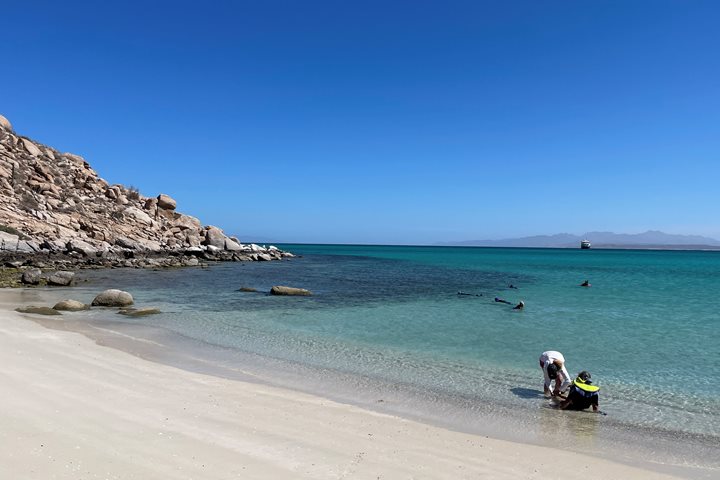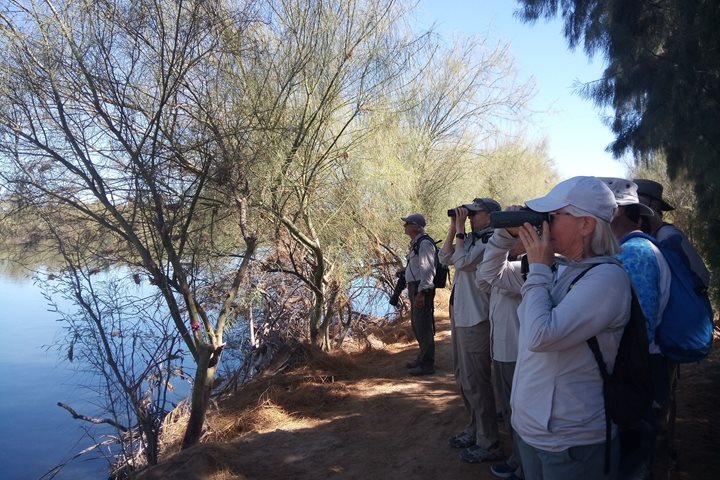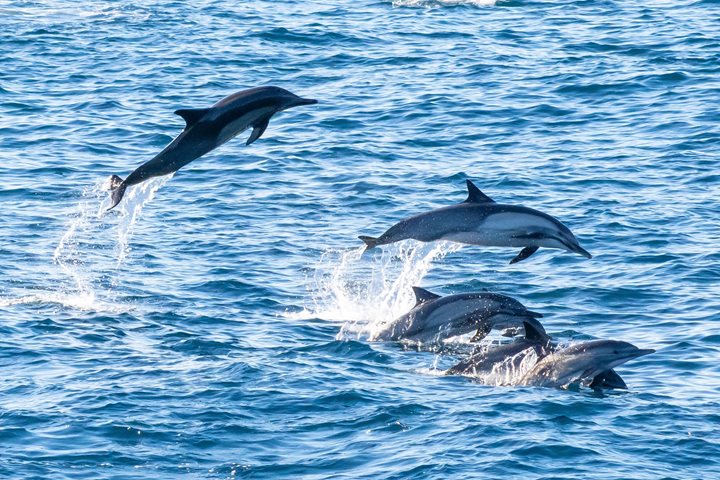Our photo expedition on board National Geographic Venture resumes with yet another perfect morning in San Ignacio Lagoon.
We sit motionless in a lightly rocking panga as we wait for gray whale mothers and their calves to surface. “Bubbles!” shouts National Geographic photographer Flip Nicklin, “The calf is right under our boat!”
The eight-week-old calf rolls over, meeting its eye with ours, having surfaced just out of arms reach. It is a thrilling moment and equally emotional to be here. It was in this very lagoon 30 years ago where I had my first encounter with a friendly gray whale, working on board the MS Polaris on my first trip with Special Expeditions.
Next, our panga driver yells “breach!” Shall I take my eye off the baby whale alongside our boat or grab my long lens hoping for one more breach? Thankfully, I made the right decision as the full-grown mother gray whale launches its 30-ton body out of the water a second time, landing with a huge splash. Outstanding.
Why are gray whales as friendly as they are? In a space so intimate and full of nurturing, why should they be so inclined to approach us? The behavior presumably began in the 1970’s, when whale watching got its start. There is something touching getting to partake in an encounter as intimate as this one.
After a third breach, the mother joins her calf and turns slowly away. Her calf trails closely as they depart toward the entrance of the lagoon. Soon the calf will be ready to swim the 6,000-mile journey north to the Bering Sea. They will spend the summer feeding there and continuing this delicate and enduring process.
Recently, a satellite-tagged gray whale was documented swimming almost 14,000 miles roundtrip, from the Far East to Baja. This is the longest known migration display of any mammal on Earth.
Heading south, we had not yet totally processed our experience with the gray whales of San Ignacio Lagoon when the call came over the ship’s loudspeaker that a blue whale was sighted ahead of the ship. The unmistakable towering blow hung in the air as we approached the area where this giant marine mammal was feeding on krill. Blue whales are the largest known animal ever to inhabit our planet. She surfaces again, this time much more near the vessel’s bow, where alongside there are Pacific white-sided dolphins riding the wake generated from our ship.
There is magic in Baja California, and what a privilege it is to share this planet with such mysterious creatures.







